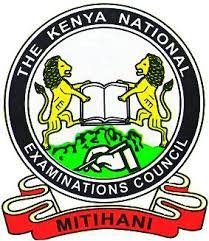
2019 Physics paper 3
Question 1
You are provided with the following:
- A stirrer
- A stond, a boss rind a clump
- A themionieter
- An aninieter
- A voltmeter
- A beaker
- A source of boiling water
- Two dry cells in a cell holder
- A switch
- Seven connecting wires
- A component labelled XProceed as follows:
(a) Set up the circuit as shown in figure 1.

Close the switch, read and record the current I through component X and the potential difference V across it. (l mark)I =……………………..
V =……………………….
Open the switch.
Determine the resistance R of component X given that: R = V/I
(b) Pour hot water into the beaker and set up the apparatus as in figure 2, so that component X afid the llieriiioirieter bulb are fully immersed.

- (c) Stir the water from time to time, when the temperature falls to 80°, switch on the circuit, read and record the current I and the potential difference V in table 1. Then open the switch.(d) Repeat (c) as the temperature falls to the oÎher values shown in table 1. Complete the table. Table 1 (8 marks)

- (e) ( i) On the axis provided, plot a graph of Log R against log T. (4 marks)

- (ii) Determine the slope S of the graph. (3 marks)(ii) Given that R and T are related by the equation Log R = Log K + n Log T (4 marks)
(i) n…………………………..(1 marks)
(ii) k…………………………..(2 marks)
Question 2
You are provided with the following:
- A metre rule
- A stand, boss and clamp A piece of string
- A 20 g mass
- A 50 g mass
- A measuring cylinder containing water
- A concave mirror
- A screen
- A candle
- Pieces of sewing threads
- A mirror holder (Lens holder)Proceed as follows:
PART A
(a) Using a string, suspend the metre rule on the stand so that it balances horizontally at its center of gravity.
Record the centimetre mark at which the metre rule balances.
Centimetre mark =………………….cm (1 mark)
(b) With the metre rule balanced at its centre of gravity, suspend a 20 g mass at a distance of 30 cm from the centre of gravity.
Suspend the 50 g mass on the other side of the centre of gravity and adjust its position until the rule is balanced. See figure 3.

- Record the distance d of the 50 g ninss from the centre of gravity.d = ……………………….
d = ……………………… (1 mark)
Record the volume of the water in the measuring cylinder provided.
V=……………………………….(1 mark)
(ii) Immerse the 20 g mass fully into the water and adjust the position of the 50 g mass so that the rule balances horizontally.
Record the volume V1 of the water plus 20 g mass and the distance d1 of the 50 g mass from the centre of gravity.
(iii) (I) Determine the volume of the water displaced (1 mark)
(II) Determine the weight of the water displaced. (density of water — I gcm(-3) (3 marks)
(d) (i) Use the principle of moments to determine the apparent weight of the 20 g mass when fully immersed in water. g — 10 Nkg-1 (2 marks)
(ii) Calculate the weight of the 20 g mass in air (g = 10 Nkg-1)
(iii) Determine the apparent loss in weight of the 20 g mass. (l mark)
PART B
(e) Light the candle and place it at distance u = 20 cm in front of the concave mirror. Adjust the position of the screen until a sharp image of the candle flame is obtained. See figure 4.

- (i) Read and record the distance v between the screen and the mirror.v=………………………………(1 mark)
(ii) Determine:
I. The magnification m of the mirror given that: m = v/u (1 mark)
II. the value f1 given that: f1 = mu/m+1
(f) Repeat part (e) for distance u1 = 18 cm.
(i) Read and record the distance v1 between the screen and the mirror. (ii) Determine the magnification m1 of the mirror. (1 mark )
(iii) Hence determine f2.
(g) Determine the average value of f. 1
